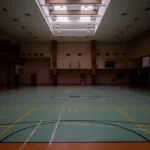Space Allocation for Fitness and Gathering
When designing a gymnatorium, careful consideration must be given to space allocation. The layout should accommodate a variety of fitness activities, including designated areas for cardiovascular exercises, strength training, and group fitness classes.
Simultaneously, ample room should be allocated for gathering spaces, ensuring they are easily accessible and conducive to social interaction.
Moreover, it is crucial to incorporate versatile spaces that can cater to different types of fitness enthusiasts. For instance, having a dedicated area for functional training equipment like kettlebells, battle ropes, and suspension trainers can appeal to individuals looking for dynamic workout options.
Creating zones for stretching and yoga can provide a serene environment for those focusing on flexibility and mindfulness exercises.
Essential Amenities in a Gymnatorium
Gymnatorium buildings should be equipped with essential amenities to enhance the experience of individuals using the facilities. These can include locker rooms, showers, restrooms, water fountains, and comfortable seating areas.
Additionally, incorporating technology features such as Wi-Fi and charging stations ensures that individuals can stay connected and productive during their time at the gymnatorium.
Furthermore, to promote a holistic wellness experience, consider integrating additional amenities like saunas or steam rooms for post-workout relaxation and recovery. Including a juice bar or cafe within the gymnatorium can offer patrons convenient access to nutritious refreshments, fostering a sense of community and healthy lifestyle choices among visitors.
The Future of Gymnatorium Buildings
Gymnatorium buildings are continuously evolving to meet the changing needs and expectations of individuals and communities. Several trends are shaping the future of these innovative structures, while technology continues to play a crucial role in enhancing the overall gymnatorium experience.
As the demand for multifunctional spaces grows, gymnatorium buildings are accommodating a variety of activities beyond traditional sports and fitness. These modern facilities are designed to host community events, cultural performances, and educational programs, serving as dynamic hubs for social interaction and recreation.
In response to the increasing focus on holistic well-being, gymnatoriums are incorporating wellness amenities such as meditation rooms, relaxation areas, and healthy food options. These additions aim to promote physical fitness with mental and emotional wellness, which creates a comprehensive approach to health within the facility.
Trends Shaping Gymnatorium Design
The integration of sustainable design practices is becoming increasingly important in gymnatorium buildings. This includes incorporating energy-efficient systems, utilizing natural light, and employing eco-friendly materials. Accessibility features are also a growing consideration, ensuring that the facilities are inclusive and accessible to individuals of all abilities.
Furthermore, the concept of biophilic design is gaining traction in gymnatorium architecture, incorporating elements of nature into the built environment to enhance the overall user experience.
Green walls, indoor gardens, and natural materials not only contribute to the aesthetic appeal of the space but also promote a sense of well-being and connection to the outdoors.
The Role of Technology in Gymnatoriums
Technology is revolutionizing the way gymnatoriums operate. From fitness tracking devices and digital training programs to interactive displays and virtual reality workouts. Technology is enhancing the fitness experience and engaging individuals in new ways.
Additionally, integrated systems for booking classes and managing membership accounts streamline administrative processes. This makes it easier for individuals to access and utilize the facilities.
Augmented reality (AR) and artificial intelligence (AI) are also being integrated into gymnatoriums. They personalize the user experience and provide real-time feedback on performance.
These technological advancements enhance the effectiveness of workouts and create a more immersive and interactive environment for users. It’s blurring the lines between physical and digital fitness experiences.











